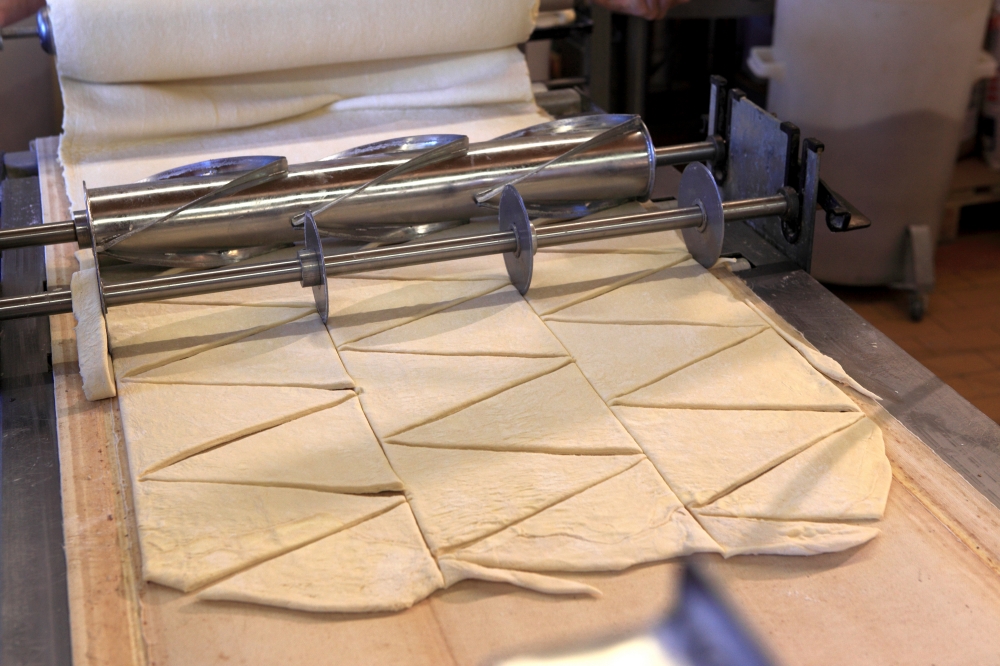
Coatings Technology Blog
Nedox® Provides Sweet Relief From Snack Cake Residue on Cutting Blades

In commercial bakeries, sticky residues on production parts are a persistent problem that can compromise the quality of the goods and hinder output. This is particularly true for bakeries that create seasonal snack cakes with ingredients such as sugars, starches and syrups that can accumulate on cutting blades, dry up and then harden. Removing this stubborn layer of dried materials can consume a lot of time and damage the blades. Taken together, these inefficiencies can’t be tolerated.
Preventing ingredients from sticking to the blades requires a strong, self-lubricating surface. Nedox® — a Magnaplate-applied process that adds hardness and other physical properties to less durable metals — is well-known for its ability to eliminate stick-slip and galling thanks to its exceptional coefficient of friction (COF). Very few solid substances, even adhesives or glues, will permanently adhere to the proprietary polymer-impregnated surface. Its excellent non-stick properties make cleanup easy and also provide superb abrasion resistance. Many Nedox coatings are USDA- and FDA-compliant, making them desirable for food applications, and a PFAS-free composition is also available. Additional features include:
- Superior mold release
- Chemical, acid and alkaline resistance
- Surface hardnesses up to Rc 68
- Operating temperature range of -250 to 1,000°F (537°C)
Here are some further examples of how Nedox successfully solves longstanding problems for food manufacturers:
- Wear resistance: candy production. Sticky slitter and guillotine blades in candy production typically require extensive, time-consuming cleanup. Nedox coatings improve surface hardness to help prevent scratches and scuffing, ease cleanup and reduce downtime.
- Stick release: robotic end effectors in baked goods production. A baker of gluten-free baked goods uses an automated robot to pick muffins from pans, but the muffins often stuck to the robot’s end effectors, or “fingers.” Nedox® gave the fingers excellent release properties to end the sticking problem.
- Stick release: sealing plates in lunch meat production. A food processor that puts lunch meats into plastic packages often experienced problems with films sticking to sealing plates. Employees used picks and scrapers to remove the film, and the plates needed repairing. After applying a Nedox surface treatment to the plates, the company reports that the release is no longer an issue.
- Stick release in high heat: rice cake cooking. High temperatures and pressures involved in cooking rice cakes can result in baked-on, burnt rice sticking to baking equipment pistons and rings. Thanks to Nedox’s excellent release properties and its ability to survive high temperatures, a rice cake manufacturer reports no sticking issues and reduced downtime for cleaning.
Make a Clean Break From Sticky Residues
Don’t let sticky food ingredients hinder product quality and productivity. Our experts are available to help you determine the right Nedox surface treatment for your food manufacturing equipment.
For more information, please visit our product page.